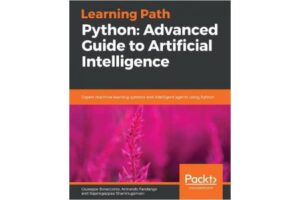Authors: Stuart Russell and Peter Norvig
“Artificial Intelligence: A Modern Approach” by Stuart Russell and Peter Norvig stands as a cornerstone in the realm of AI literature, offering an extensive and contemporary exploration of the theory and practice of artificial intelligence. This review, tailored for beginners and intermediates in the field of AI, aims to provide an analytical perspective on the book’s merits, accessibility, and relevance in the ever-evolving landscape of artificial intelligence.
Comprehensive Scope
The book’s title, “A Modern Approach,” aptly captures the essence of its content. Russell and Norvig cover a vast array of topics, providing a comprehensive and up-to-date introduction to the multifaceted field of artificial intelligence. This breadth is particularly valuable for readers seeking a well-rounded understanding of AI, encompassing both foundational concepts and the latest advancements.
Unified Presentation
The 4th Edition of the book addresses the need for a more unified presentation of AI concepts. This approach aids readers in building a cohesive mental model of the subject matter, ensuring that they can seamlessly connect various aspects of AI theory and practice. The authors’ commitment to clarity is evident throughout the text, making it accessible to readers with varying levels of technical expertise.
Updated Technologies
In the ever-evolving landscape of AI, staying current with the latest technologies is crucial. The 4th Edition of the book fulfills this need by bringing readers up to date on recent advancements. The inclusion of machine learning, deep learning, transfer learning, multiagent systems, robotics, natural language processing, causality, probabilistic programming, privacy, fairness, and safe AI reflects the dynamic nature of the field and ensures that readers gain insights into the most relevant and cutting-edge developments.
Educational Approach
Russell and Norvig adopt an educational approach that is both informative and engaging. The text is structured to guide readers through the foundational principles of AI, gradually introducing more advanced concepts. This instructive approach caters to beginners who are new to the field. Simultaneously, it provides sufficient depth for intermediate readers seeking a deeper understanding.
Machine Learning Emphasis
The coverage of machine learning has been expanded, encompassing deep learning and transfer learning. This aligns with the contemporary dominance of these subfields in AI research and applications. The authors acknowledge the pivotal role of machine learning in the current AI landscape. They ensure that readers gain a robust understanding of its principles and applications.
Emerging Areas
The book does not shy away from addressing emerging areas in AI, such as probabilistic programming, privacy, fairness, and safe AI. These topics reflect the ethical considerations and real-world implications associated with AI technologies. By incorporating discussions on these issues, the book prepares readers to navigate the evolving landscape of AI responsibly and ethically.
Accessible Language
One of the book’s notable strengths is its accessibility. The authors present complex concepts using clear and straightforward language, making it approachable for readers with various backgrounds. The book maintains a reader-friendly experience by avoiding excessive jargon. It also includes examples and illustrations to help beginners build a solid foundation in AI concepts.
Relevance for Practitioners
While the book serves as an excellent textbook for academic settings, its relevance extends to practitioners in the field of AI. The concepts discussed have real-world applicability, combined with the coverage of the latest technologies. This makes it a valuable resource for professionals seeking to enhance their understanding of AI or stay abreast of current trends.
“Artificial Intelligence: A Modern Approach” by Stuart Russell and Peter Norvig stands as a commendable resource. It successfully balances breadth, depth, and accessibility in its exploration of artificial intelligence. For beginners, it offers a well-structured introduction to foundational concepts. Intermediates benefit from the inclusion of cutting-edge technologies and discussions on emerging ethical considerations. The book’s educational approach, clarity of language, and commitment to presenting AI as a dynamic and evolving field make it an essential read. It is for anyone embarking on a journey into the world of artificial intelligence. As AI continues to shape the future, this modern approach ensures that readers are well-equipped. They can navigate its complexities and contribute meaningfully to its development.





